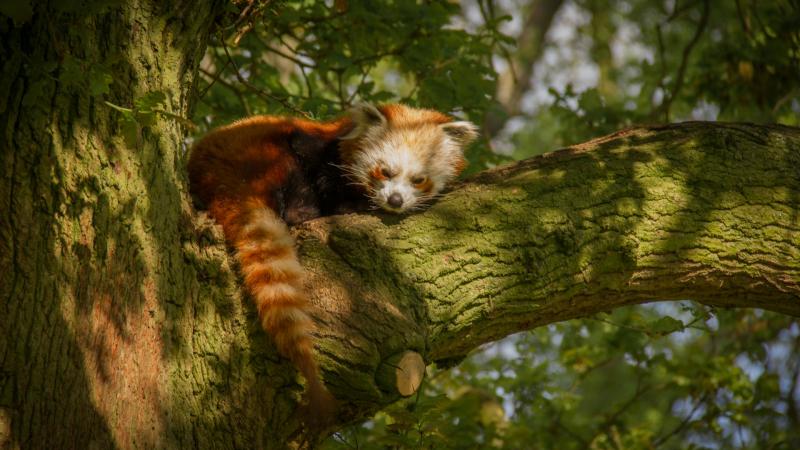
The Red Panda (Ailurus fulgens) is an animal with soft reddish-brown fur, is only seen in the temperate forests of the Himalayas that includes parts of India, China, Nepal, Bhutan and Myanmar.
Unlike the popular misconception, the Red Panda is not closely related to the Giant Panda. In fact, the Red Panda is put in the Family Ailuridae, all to itself, and is more closely related to racoons, weasels and skunks. But like the Giant Panda, this small mammal’s diet is also made up of mostly bamboo, although it may also eat smaller mammals, birds, flowers, fruits and berries.
But the Red Panda is facing a lot of threats today; from loss or fragmentation of its bamboo. Estimates put the current global population of Red Pandas at about 10,000 individuals and has been put under the ‘Endangered’ category of the International Union for the Conservation of Nature’s (IUCN) Red List
A group of researchers conducted a study on Red Pandas and the factors that affect its occurrence in the Dhorpatan Hunting Reserve in Nepal.
The researchers hypothesised that a greater number of Red Pandas would be found in areas with less human interference, like livestock grazing and bamboo extraction, high number of Arundinaria sp. of bamboo, which makes up 81.7% of the Red Panda’s diet in this reserve, and higher amount of forest cover. Field surveys were then done to gain information about the occurrence of the mammal in this reserve.
Red Panda were indeed found in areas with higher amount of bamboo and decreased where bamboo extraction was high. The study also showed that the mammal preferred elevations below 4000m, as previously believed.
As local communities that live within the reserve depend on bamboo to feed their livestock and also to make baskets which are sold in local markets, conservation and managements plans for the Red Panda would have to take into account the interests of both the panda and the indigenous human communities suggest the researchers.
























